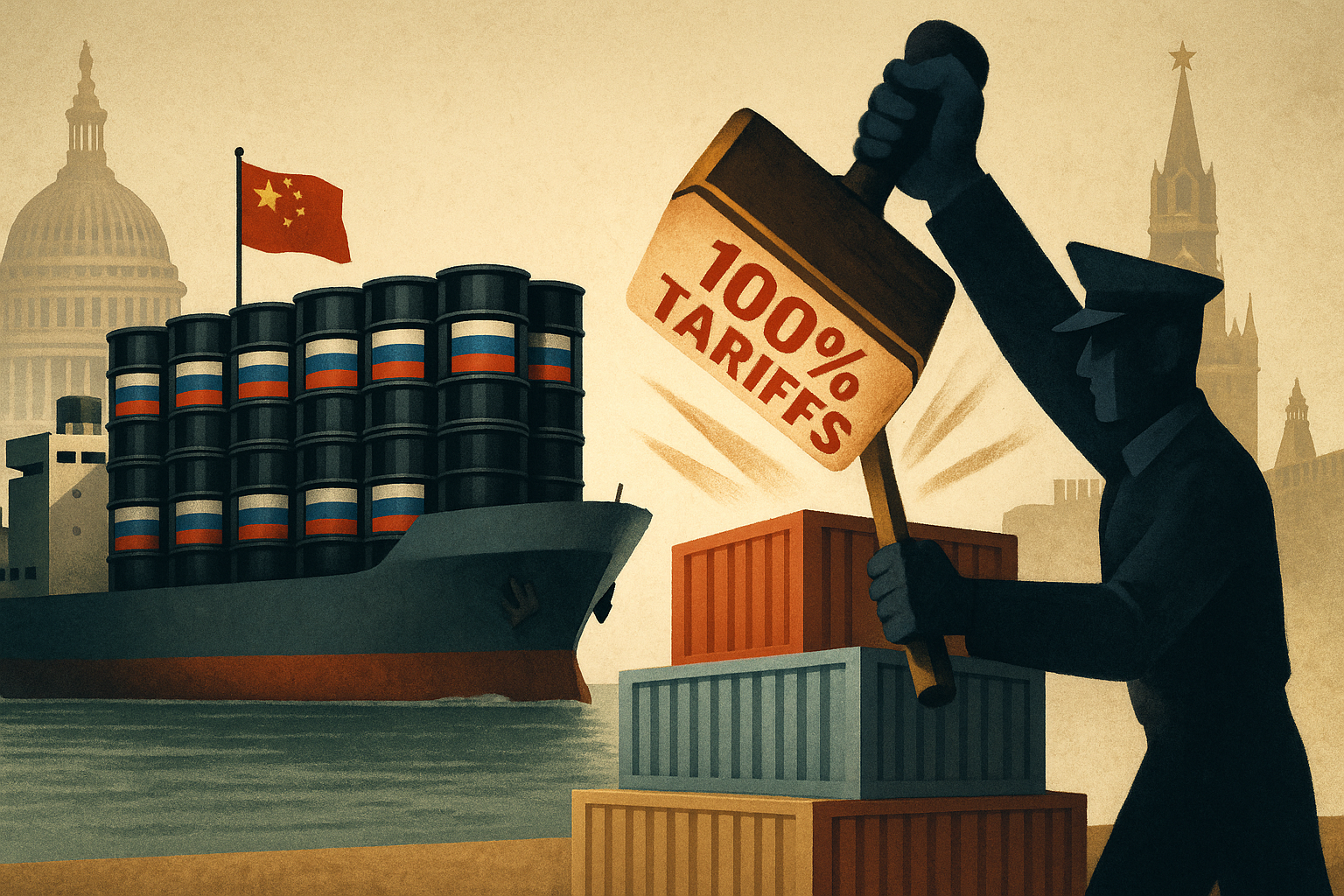The economic saber-rattling between Washington and Beijing just got turned up to eleven. Word around diplomatic circles is that the Biden administration is weighing punitive tariffs—we're talking a potential eye-watering 100%—on Chinese goods if the Asian superpower keeps filling its tanks with Russian oil.
I've been covering trade disputes since the NAFTA battles of the '90s, and this one has a particularly nasty edge to it. It's not your garden-variety protectionism wrapped in "America First" packaging. No, this is economic warfare with a clear geopolitical target.
When Trade Policy Becomes Foreign Policy
Look, there was a time when countries mostly kept their economic and diplomatic playbooks separate. Those days are gone, folks. Long gone.
What we're witnessing is the full-scale weaponization of economic levers to achieve foreign policy objectives. The lines have blurred completely between the Commerce Department's agenda and the State Department's priorities.
This represents what some analysts (and I've spoken with several in recent days) are calling an "integrated leverage approach"—connecting previously separate spheres of influence into one comprehensive pressure campaign. Energy policy, trade relations, security concerns, tech restrictions... all pieces on the same chessboard.
The Biden White House—which campaigned on rolling back Trump's tariff obsession—has instead embraced economic restrictions with surprising enthusiasm. Remember when mainstream economists used to clutch their pearls at the mere mention of tariffs? Now they're standard operating procedure. Funny how quickly orthodoxies collapse.
Markets Hate This One Weird Trick
If these 100% tariffs materialize (still a big if), the market implications would be... well, brutal:
Supply chains would face their second major disruption in three years. Companies that just finished reconfiguring their pandemic-era logistics would need to start over. Again.
Inflation? It would get a whole new lease on life. Consumer goods prices would jump immediately. (Just when Jerome Powell thought he could take a victory lap. Poor guy can't catch a break.)
China wouldn't just sit there and take it. They'd hit back—probably targeting American agriculture, Boeing aircraft, and tech companies with significant Chinese market exposure.
And emerging markets? They'd be caught in the crossfire, forced to choose sides in ways that would send volatility through the roof.
Bond traders I've spoken with are already pricing in additional risk premiums. When you combine supply shocks with geopolitical uncertainty, you get the toxic cocktail markets hate most.
Follow the Oil
The truly fascinating angle here—the one that makes this dispute different—is how energy flows have become the trigger point.
Since Russia's invasion of Ukraine, Chinese purchases of Russian oil have surged dramatically. We're not talking about subtle increases, either. Chinese imports of Russian crude jumped more than 25% last year alone. That's not accidental market dynamics; it's strategic realignment.
This creates the exact financial lifeline for Moscow that Western sanctions were designed to cut off. Every yuan that flows to Russian oil fields helps fund... well, you know what.
What's really happening is the splintering of the global energy market into competing blocs—reversing decades of increasing integration and interdependence. The 1970s called, and they want their geopolitical energy politics back.
The High-Stakes Game of Chicken
The question now becomes: who blinks first?
Chinese leadership has built its entire political legitimacy around standing firm against Western pressure. President Xi cannot be seen capitulating to American demands without losing face domestically—something that might outweigh pure economic calculation.
But the Biden administration faces its own constraints. Threatening measures that would send Target and Walmart prices soaring months before a presidential election? That's playing with political dynamite.
(Having covered the political fallout from the 2018-2019 tariff rounds, I can tell you voters have very little patience for policy experiments that hit their wallets directly.)
Game theory suggests we'll probably land somewhere short of full implementation—maybe targeted tariffs on specific sectors rather than the across-the-board approach. But even the threat fundamentally changes risk calculations for companies with Chinese manufacturing exposure.
Welcome to the New Normal
This dispute, whatever its immediate resolution, signals something much bigger than a temporary trade spat. We're witnessing the painful birth of a new global economic architecture.
The neat separation between economic policy and geopolitical strategy? Gone. The idea that business considerations would ultimately trump security concerns? Obsolete. The notion that globalization was an irreversible force? Well...
For investors, this means rethinking fundamental assumptions. Portfolio construction now requires understanding political risk in ways that were unnecessary during the post-Cold War honeymoon. Sector exposures, geographic diversification, commodity dependencies—all need reevaluation through a geopolitical lens.
The days when you could make investment decisions based purely on financial metrics have vanished. Now you need to understand the dynamics between Washington, Beijing, and Moscow as much as you need to grasp P/E ratios and yield curves.
And let me tell you something—I've been in this business long enough to know—this brave new world probably won't deliver higher returns or lower risks. But damn if it isn't fascinating to watch unfold.
